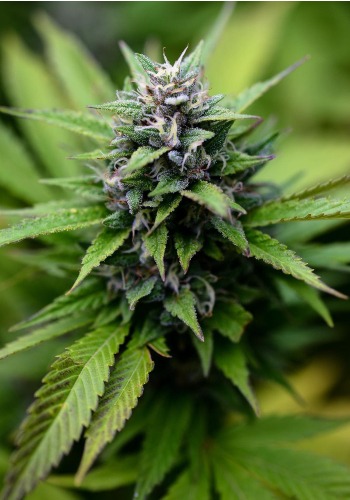Guava Jelly Genetic Profile
Named after Bob Marley’s sexiest rocksteady song, it’s no surprise that Guava Jelly marijuana were made with lovers in mind. Blending DNA from four delicious cannabis strains, it’s one of the Sensi Seed company’s most accomplished creations and boasts a beautiful psychoactive hit that’s sure to get you hot under the collar. Paired with an orgy of evocative fruit flavours and fantastic growth genetics, it’s a prime candidate for new cultivators, featuring everything you could possibly ask for from a 50/50 sativa/indica hybrid.
Guava Jelly lineage was born from a foxy four-way marriage of Wedding Cheesecake, Strawberry Kush, OG Kush, and a South African Durban Poison plant, so you this white label phenotype means business. Now available from the MGS online store as feminized seeds, you’d be absolutely crazy to miss out on this cosmopolitan come-hither cannabis variety.
Guava Jelly Terpene Profile
Guava Jelly aroma blends a gorgeous medley of skunk and kush scents with a berry and tropical fruit undertone. Thankfully, these smells are relatively low-impact during flowering, with the strain’s fruity bouquet releasing only after the buds are dried and broken up.
Expect hints of guava and strawberry, along with aniseed and citrus flavours from Durban Poison, and a heavy but distinctly sweet herbaceous aftertaste passed down from its Cheese and Cookies relatives. The alluring flavour of this terp-rich cultivar can be attributed to several different chemical compounds, including myrcene, limonene, and caryophyllene.
Although Skunk, Kush, Cookies, and Afghan strains tend to have slightly different terpene profiles, this phenomenal plant combines the lot, making it a must for flavour hunters and fans of cannabis concentrates.
Guava Jelly Strain Effects
Guava Jelly effects are sublime and incredibly sensual. Thanks to a blend of indica and sativa genes, it’s suitable for enhancing all kinds of nocturnal activities, and its arousing influence can even help improve your sex life. Bringing about a warm and positive body feeling paired with an energetic cerebral high, it’s the ideal aphrodisiac but also entirely suitable for sharing with platonic friends. Whether you’re looking for a little Netflix and chill, medicinal relief, or relaxing recreational enjoyment, this all-purpose plant will provide a balanced and beneficial experience that you’re absolutely going to love.
Guava Jelly THC content is around 16% on average, making it suitable for novices as well as more experienced consumers. If you’re looking to strike it lucky, we recommend keeping consumption to a minimum because while this high THC/low CBD stain is unlikely to cause a spike in anxiety-like some sativas, it can make you tired and turned off if you overindulge, ultimately ruining your chances of a romantic liaison.
Guava Jelly Medical Benefits
Marijuana grown from Guava Jelly medical seeds isn’t only meant for when you’re making whoopie. This strain also has plenty of healing qualities, and its mix of happy and relaxing effects are ideal for patients with depressive disorders. THC causes the body to release a similar combination of feel-good chemicals to those we experience when having sex and, if you suffer from a mood disorder, this uplifting cocktail can help to inspire a more positive mindset and a brighter outlook when you’re feeling blue.
Guava Jelly medical benefits are also suitable for treating chronic stress and helping ease overactive imaginations. When your thoughts are racing a mile a minute, its calming influence can help bring you down to a steadier pace while also relaxing the body, giving you greater control over your stress levels. These effects are further enhanced by terpenes like myrcene and caryophyllene, which work alongside cannabinoids via a phenomenon known as the entourage effect.
How to Grow Guava Jelly Strain
Growing Guava Jelly cannabis seeds indoors is a great option, but outdoor breeders will require a Mediterranean climate and access to plenty of direct sunlight. It’s a vigorous and highly productive strain with a complex bud structure that grows in long, fat calyxes which intertwine between its flower clusters to form weighty oversized colas. This makes it highly suitable for super cropping techniques like SOG (sea of green) or SCROG (screen of green), but even without, growers will need to offer extra support to their plants once the flowering period arrives.
Due to its genetics, it can stretch a little long during this period, but fortunately, Guava Jelly feminized flowering time is only nine-ten weeks from germination, which is slower than an autoflowering strain but is far shorter than that of the average sativa.
Producing lime coloured buds with golden trichomes and long pistils that turn from yellow to white, and finally deep pink once the flowers buds ripen, these feminized photoperiod plants are incredibly attractive and are sure to make your friends green with envy. Guava Jelly yields are also impressive and average at around 500g per m2 indoors. Make sure to take care when cutting and curing as the plant’s thick covering of resin glands mean that even single strands can turn to brittle and sticky shards once dried.

